
Assessment Format
This pages is about the recommended assessment format for use as part of the Evaluation and Evolution process within the One Community Education for Life program. It is a two-directional feedback format that is guided by the Teacher/Facilitator and led by the Learner. It includes a diversity of optional Modules to make the learning/growth path individualized.
We discuss the details of this component with the following sections:
- Assessment Format Overview
- Why Open Source this Format
- Ways to Contribute
- Significant Contributors to this Component
- Assessment Format Details
- Format Steps and Process Summary
- Summary
- FAQ
- Resources
RELATED PAGES
EDUCATION OVERVIEW | HOW TO USE THIS PROGRAM | OUR OPEN SOURCE PURPOSE
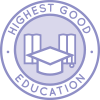
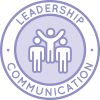
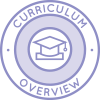
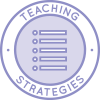
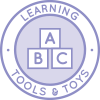
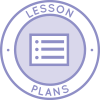
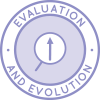
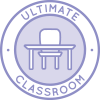
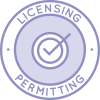

ASSESSMENT FORMAT OVERVIEW
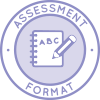 The purpose of learner-guided evaluations is to engage all participants in their own life coaching and human evolution process. The evaluation serves as a self-prescribed engine for identifying, pursuing, and evolving passions and raw talents through interdisciplinary, inquiry-based learning. This is a bidirectional process between the Learner and Teacher/Educator that allows the Learner to help chart their own path and shape their own educational experiences. The complete process can be summarized with this graphic:
The purpose of learner-guided evaluations is to engage all participants in their own life coaching and human evolution process. The evaluation serves as a self-prescribed engine for identifying, pursuing, and evolving passions and raw talents through interdisciplinary, inquiry-based learning. This is a bidirectional process between the Learner and Teacher/Educator that allows the Learner to help chart their own path and shape their own educational experiences. The complete process can be summarized with this graphic:

When properly conducted, this format creates opportunities for the Learner and the Educator to ask personalized questions and explore strategies to identify and successfully engage all areas of a person’s life that they want to develop. It is designed for Learners of all ages, Educators in any capacity, Managers and/or Facilitators in any capacity, and interns, understudies, and/or volunteers/employees in any environment. Through its use, everyone is accountable and the entire educational experience is enhanced. Most importantly, if you are doing it right, it is fun for everyone.

WHY OPEN SOURCE THIS FORMAT
 One Community is about creating positive and permanent global transformation through open source and self-replicating teacher/demonstration hubs. The complete Evaluation and Evolution process is our structure for assessing, maintaining, and improving the educational process and experience for both new and veteran members of our team.
One Community is about creating positive and permanent global transformation through open source and self-replicating teacher/demonstration hubs. The complete Evaluation and Evolution process is our structure for assessing, maintaining, and improving the educational process and experience for both new and veteran members of our team.
The format described here was initially conceived for use in the Education for Life component of One Community. We then developed it for use in any environment where there are Educators and Learners, Facilitators and Staff, Managers and Teams, etc. Our hope in open sourcing it is to provide a usable tool for replication that also demonstrates and teaches the benefits of two-directional feedback and collaborative learning and work-environment development. In our opinion, doing this provides a path for improving educational and working relationships within both learning and work environments while also improving the learning and growth process for all participants.
Sharing and helping to support and spread ideas like this is directly in alignment with our Purpose and Mission, our Global-transformation Pledge, and Highest Good philosophy for open source creation, sharing, and making a difference in the world.

WAYS TO CONTRIBUTE TO EVOLVING THIS EDUCATION PROGRAM WITH US
SUGGESTIONS | CONSULTING | MEMBERSHIP | OTHER OPTIONS
SIGNIFICANT CONTRIBUTORS TO THIS COMPONENT
Ellen Ross Kaspi: Progressive Educator and Mind/Body Modality Specialist
Jessica Wienke: Organizational and Leadership Development Consultant
Sangam Stancza: Ph.D. and P.E.
Stephanie VanderKallen: Mental Health Professional and Teacher
ASSESSMENT FORMAT DETAILS
 As stated above, the purpose of this Learner-guided evaluation format is to engage all participants in their own life coaching and human evolution process. It allows the Learner/Team Member to enroll in charting their own path and shaping their own educational experiences. It also allows the Teacher/Facilitator to get valuable feedback for their growth process. We cover these details and more with the following sections:
As stated above, the purpose of this Learner-guided evaluation format is to engage all participants in their own life coaching and human evolution process. It allows the Learner/Team Member to enroll in charting their own path and shaping their own educational experiences. It also allows the Teacher/Facilitator to get valuable feedback for their growth process. We cover these details and more with the following sections:
- Assessment Format Goals
- Helpful Evaluation Tips and Tools
- Explanation of Key Roles and Terminology
- Format Steps and Process Summary
- Explanation of Each Evaluation Step
- Step 1: Centering
- Step 2: Explaining the Purpose of the Evaluation
- Step 3: Learning about the Learner/Team Member
- Step 4: Determining What’s Working and What’s Not
- Step 5: Assessing Progress
- Step 6: Assessing Character Development
- Step 7: Developing a Growth Plan
- Step 8: Discussing Homework Items
- Step 9: Is Everyone Complete?
- Step 10: Review All Steps in Selected Modules (after the meeting)
- Step 11: Write a Summary (after the meeting)
- Downloadable/Replicable Forms
ASSESSMENT FORMAT GOALS
The primary goal of this Evaluation and Evolution process is to improve the learning and teaching experience for all involved. The process should be fun, led by the Teacher/Facilitator but guided by the Learner, and a positive growth experience for everyone. This will help to maintain individualized program development, leverage both Learner and Educator strengths, and also maximize development and improvement in the areas Learners and Educators desire most.
Through two-directional feedback and development is meant to provide something for:
- Learners of all ages
- Teachers in any capacity
- Managers and/or Facilitators in any capacity
- Interns, understudies, and/or volunteers/employees in any environment
See the Roles section below for definitions of each of the above.

HELPFUL EVALUATION TIPS AND TOOLS
Here are some helpful evaluation tips and tools to consider when conducting your assessment. These are specific to the Evaluation and Evolution process. For the more broadly-applicable suggestions we’ve compiled for use with the entire Education for Life component of One Community, visit our Foundations of Outstanding Leaders, Teachers, and Communicators page. Before conducting any evaluation/assessment, we recommend reviewing and being sure you fully understand those and these so they can be integrated/touched on to the best of your ability throughout the evaluation process:
- Remember to Have Fun
- Maintain a Growth Mindset
- Seek to Understand Individual Goals and Values
- Keep it Learner-focused
- Set Achievable but Challenging Goals
- Ask How Everyone can Better Support One Another
REMEMBER TO HAVE FUN
First and foremost, remember to have fun with the evaluation process. It is purposed for everyone’s growth and progress and should be taken seriously, but not so seriously that it isn’t fun. Keep the process light and enjoyable for everyone involved and remember, if you are doing it right, it is fun for everyone. If needed, see this FAQ for how to keep it fun when disciplinary action seems necessary.

MAINTAIN A GROWTH MINDSET
Second only to remembering to have fun, be sure to support and help develop a Growth Mindset. This means remembering that everybody has potential and everything is a growing experience. Focusing on Growth Points, Growth Opportunities, and the Growth Mindset is about focusing on the learning journey itself and the fact that challenging ourselves is how we get better.
We are all on a growth path and have been learning everything we know from the day we were born. With this in mind, embrace challenge, avoid labeling and judgement of ourselves and others, and see all experiences as opportunities for growth. We all succeed most when we define individual/personal “over-achievement” as the ultimate process of self-growth.
Here’s an excellent 3-minute video about the origin of the concept of a Growth Mindset and the research that has been done around it.
SEEK TO UNDERSTAND INDIVIDUAL’S GOALS AND VALUES
If you desire to maximize results, get to know the participant’s authentic interests and passions. Be clear about your own authentic interests and passions too. When performing the Evaluation and Evolution process, use open ended (vs. yes/no answerable) questions to lead the conversation to understand a Learner’s life goals and desired areas of focus. Everything you create together should be based on these. The more you can relate what is being taught/accomplished to a person’s individual goals and values, the more relevance it will have. Open ended questions help the learner self explore.
Examples of open ended questions for self-exploration include: What’s the greatest outcome you could imagine? What would you want to accomplish? Do you know someone that you could model who has already achieved what you desire to achieve? Did you notice any strategies that were successful for them that you may also find helpful for yourself? How can we make this more fun for everyone involved? When you go outside to play, what do you like to do?
“What’s most important to you? What are your dreams and goals? What makes you happy? What are your values?”
KEEP IT LEARNER-FOCUSED
Remember to always keep the evaluation Learner-focused. To help with this, the Evaluation Forms make sure that the Learner rates themselves on all developmental and subject areas. For those using the Evaluation and Evolution process with the complete Education for Life program, use the Lesson Plans and subject molecules (linked below) to help stimulate creativity. Have the individual self-asses with questions like:
“What am I most interested in?” and “Which areas do I need to focus on?”
The program and evaluation process are designed to assure an individual can demonstrate sufficient understanding of each educational focus to be adequate for any environment. Molecules track progress in a nonlinear fashion. Focusing on what the individual is interested in and most passionate about is the key to excelling and surpassing all traditional standards.
Through this approach, a person who loves Art gets your help to use Art as the engine to teach English, Math, Science, etc. The Educator/Learner conversation helps develop a Learner-specific curriculum, where the Educator can help in painting the road map. “For your goal of ____, these are the areas on the Math molecule you need to focus on.” You can additionally help facilitate with questions like:
“Here are the different subject areas… which ones are you most interested in and why?”
Here is a general layout for developing a Learner-focused plan:
- Review: Review what you focused on last session
- Ask: “What do you want to focus on this session?” Brainstorm this if brainstorming is part the Learner’s learning style
- Ask: “What are fun ways you can think of to learn this?”
- Develop: Use existing guidelines and templates to develop in the direction defined by questions #2 and #3 above:
- Molecules
- Lesson Plans (Reference this page too: Lesson Plans How-to)
- Learner and Educator can create one if it doesn’t exist
- Refine: How do you feel about this plan? Do you want to modify, add, delete anything?
- Prioritize: Put in order of importance based on the Learner
- Clarify: Review the snapshot of what you have just planned as your focus for the upcoming session
Be sure to pick things that are appropriate for the age & ability levels of the Learner. For younger Learners, the teacher will want to suggest and guide the ideas. The following 4 PDFs cover standard milestones and suggestions for: Birth to Age 3, Birth through 3rd Grade, Birth to Age 5, Birth to Age 8. Use these guides and the resources throughout this website and elsewhere to stimulate ideas for where to focus your combined attention.




Remember to be open to going beyond standard guidelines if you feel confident in doing so. For any Learner able to answer them, you can start framing questions that open up options for even more growth and self-analysis:
- What is it that you want? Can I show you how to get it faster?
- When doing xyz, how do you feel about it?
- What did you learn from that? What was most fun about that, and why?
- What can you teach me from what you just learned/experienced?
- Tell me about that? How do you know?
EVERYTHING can be a learning experience. Take the time to keep it fun as you make it one. Especially for early Learners, remember to always do this without expectations or pressure, so the learning process always remains positive. Make it informal and so fun that they don’t even know they are learning. Make it your own learning and growth experience to be creative in making it fun like this and challenge yourself to see things from the Learner’s perspective.
If you approach the learning process this way, and really keep it Learner-focused, you may be surprised at how even the youngest of Learners can start to engage and understand concepts often reserved for older children. If you are up to the challenge, here are some ideas to consider adding into the above guidelines:
- Math and Science
- Literary skills
- Reading
- Advanced vocabulary
- Social skills
- Behavior
- Understanding their own social strategies
- Understanding the social strategies of others
- Considering other perspectives: “I hear you say you don’t have a lot of friends, but I see you play with Tom, Aparna, and Yun. How do you see them? “
- Drawing out and exploring dreams and desires
- Understanding their own motivating factors
- Understanding (and helping create) how the educational roadmap unfolds
- Understanding what kinds of questions the Educator is asking
- Demonstrating their learning and understanding of the structure used to evaluate whatever came out of the lesson plan
Are you doing your best? How do you know? Now what do you want to apply this to? How can I help you?
For higher-level Learners, you can still use the ideas above and you will also want to help them self-discover additional areas to engage in. Encourage them to create a learning path, like a personal molecule. If you are using the complete One Community Education for Life program, follow the guidelines on the How-to Page. If you are just looking for inspiration, read that page and then start with the area that best fits yours and your Learner’s goals:










SET ACHIEVABLE BUT CHALLENGING GOALS
Set achievable but challenging goals that promote development. This seems obvious but is often overlooked. When setting goals, check and double check that they are both achievable and appropriately challenging.
“Let’s come up with a structure for what you want to accomplish and how you want to develop….”
SMART goals help with this. SMART goals are:
- S = Specific
- M = Measurable
- A = Attainable
- R = Relevant, Rigorous, Realistic, and Results Focused
- T = Timely and Trackable
Ask questions and brainstorm on the strategies together:
“What is your definition of success? How will you know when you have achieved your goal?”
Together, come up with a list of specific activities and timeframes for the Lesson Plans, Teaching/Learning Strategies, molecules, etc. in ways that motivate the Learner to try new things. Integrate multiple subject and values areas. To facilitate, use open-ended questions to help the learner self-discover.
“How did your last session go? Tell me about the goals that were or were not met. Why do you think that is?”
Strategize with this in mind and try to design and plan using the intrinsic motivations, values, and believes of the Learner:
- Some people respond better to consequences (fear-based reality)
- Some people respond better to rewards (opportunity-based reality)
- For motivation and to help support the Growth Mindset, it can also be helpful to remind the Learner that their perception is subjective. “We have perspective that can be different and they are both correct for us as individuals. This means we also have a choice on how we focus on things. Our focus is subjective and you can choose to be at the “cause” or at the “effect” end of the consequences of your thought process and actions. You are creating how you think and feel about things through your subject perception of what it all means and this can be either a hindrance or a powerful and useful tool.”

- Integrate any needed/desired traditional assessment/standards too
- Spectrum Learning Book: Grade-based books for each subject that can be a great way to teach and evaluate progress based on traditional learning expectations
- SAT/ACT Test Prep: Many websites, applications, and other resources exist for preparing for these tests. In a hands-on program with a Learner that loves to excel, using these resources can begin as early as desired. We’ve used them as early as age 6 with an advanced Learner.
- International Standards: Many websites, applications, and other resources exist for international evaluation structures too.
ASK HOW EVERYONE CAN BETTER SUPPORT ONE ANOTHER
Ask the Learner/Team Member what you as the Teacher/Facilitator can do to support them better. This is for your growth too, getting feedback on your teaching/facilitation style and how it is working for the individual. By remembering to ask each other this question every time, you set up a cyclical process that allows both the Learner/Team Member and Teacher/Facilitator to teach while learning and learn (and model learning) while teaching.
Together, both people help choose more meaningful tasks, reflect on their creation through feedback from and for each other, and collaboratively choose the best approaches for helping each other succeed in both the learning and teaching process. Together, both parties can make revisions to improve the clarity, approaches, and outcomes of their learning and teaching goals.
“How can I support you even more…”
For new participants, consider allowing the Learner to immerse themselves in the program for two weeks without expectations. Keep it simple by giving basic guidelines and maintaining a “Do Your Best” environment of fun and exploration.
“If you are looking for direction, take a look these lessons plans and go with what seems best for you. Together we’ll use that to guide your learning process. At the end of the next two weeks we’ll develop a roadmap that suites you…”
After two weeks, engage the Learner in their first bidirectional evaluation, so both the Learner and Educator are evolving and giving and getting feedback. Use this feedback so both the Learner and Educator can improve their approach. If there is an opportunity for improvement, in skills or behavior, find out root causes and/or specifics. Approach the process as collaborative friends versus the traditional Learner/Educator structure. Expand your understanding of the program and each other’s goals together, and grow together.
Thereafter, engage the Learner in evaluation/feedback sessions using your preferred frequency. This frequency will usually be dependent on time availability and could be monthly, quarterly, biannually, or something else. Document information from your meetings using Google Docs. This allows for easy collaboration, sharing (if desired), review at a future point, and convenient information storage. See the Information Maintenance and Sharing page for more about this.
EXPLANATION OF KEY ROLES AND TERMINOLOGY
There are several different roles that support a Learner as part of their learning team, and each are important within the Education for Life program. The Educator will always be a part of the team and parent/guardian involvement is strongly suggested for younger children. The people who fill the different roles on the Learner’s evaluation team are chosen by the Learner once they are mature enough to choose them. As the Learners mature and become adults, the people they choose as their learning team may shift and/or be replaced by peers/friends/mentors/partners/etc.
Regardless of who the team is made up of, the recommended (adaptable) assessment forms are designed to allow for input and participation from each of the various team members invited to do so by the Learner. With this in mind, members of the learning team should clearly posses a desire to help and support the Learner however they can while also being mature enough to contribute in some way.
The key roles and their involvement in the assessment process are:
- The Learner/Intern/Worker: The person the assessment is focused on
- Educator(s)/Teacher(s)/Facilitator(s): The person(s) formally assisting the above individual in their growth process. Whoever is the primary facilitator of the Learner’s education process will host/lead the assessment process each time unless otherwise agreed. This primary facilitator will also be the one to receive the primary feedback from the Learner/Intern on the assistance they are providing, how they are helping organize forward progress throughout the session, structuring the reviews, etc.
- Parent(s)/Guardian(s): This is the person or people supporting/guiding the growth and development of the Learner/Intern in the home environment. They should attend the live assessments for younger Learners and however long beyond this that everyone agrees it is beneficial. Their role is to support the Learner’s growth, provide encouragement, share challenges they may have noticed in the learner’s home environment, help give feedback to both the Learner and Educator, and contribute (when appropriate and primarily with younger Learners) ideas for setting realistic expectations and goals. These members of the team may also assist the Learner in doing their self-evaluation before the meeting with the Educator.
- Other Supports: This is anyone else that assists the Learner in their growth/learning/assessment process. These individuals could be peer(s)/friend(s)/other family, community members, or anyone else the Learner chooses. Their primary function is to support the Learner in whatever way is most beneficial. If everyone desires it, these members can attend the evaluations, provide input on the assessment, or help in other ways.
Everyone’s primary function is to support the Learner in whatever is most beneficial.
For complete details (and training resources), please visit the Collaborative Team Roles page.

FORMAT STEPS AND PROCESS SUMMARY
 Now let’s explore the specific format steps and processes. The assessment format includes the recommended (adaptable) assessment forms and a face-to-face evaluation meeting. The forms are typically given in advance to help the Learner (and any members of their team that they’ve chosen to help with this part) to reflect on their previous development and start to develop a plan for the upcoming learning session/term. The evaluation meeting includes the Learner, Educator/Facilitator, Guardian(s), and anyone else everyone agrees upon. It is a two-directional feedback format that is guided by the Educator/Facilitator and led by the Learner.
Now let’s explore the specific format steps and processes. The assessment format includes the recommended (adaptable) assessment forms and a face-to-face evaluation meeting. The forms are typically given in advance to help the Learner (and any members of their team that they’ve chosen to help with this part) to reflect on their previous development and start to develop a plan for the upcoming learning session/term. The evaluation meeting includes the Learner, Educator/Facilitator, Guardian(s), and anyone else everyone agrees upon. It is a two-directional feedback format that is guided by the Educator/Facilitator and led by the Learner.
The evaluation meeting purpose is to develop/build/finalize the learning path for the next session. The Learner may or may not have already started developing this on the form. The learning path the team develops/evolves during the meeting will focus on the goals of the Learner and include a diversity of optional Modules (see the assessment forms page) to support these goals and make the learning/growth path individualized.
The meeting is comprised of the following 9 steps, which are fully detailed in the next section:
- Step 1: Centering
- Step 2: Explaining the Purpose of the Evaluation
- Step 3: Learning about the Learner/Team Member
- Step 4: Determining What’s Working and What’s Not
- Step 5: Assessing Progress
- Step 6: Assessing Character Development
- Step 7: Developing a Growth Plan
- Step 8: Discussing Homework Items
- Step 9: Is Everyone Complete?
- Step 10: Review All Steps in Selected Modules (after the meeting)
- Step 11: Write a Summary (after the meeting)

EXPLANATION OF EACH EVALUATION STEP
Here we explore and describe each of the evaluation steps in detail. The total time for the face-to-face meeting has been designed to be about 30 minutes. Combined Educator preparation and wrap-up time for each meeting has been designed to be about 30 minutes also. Both of these could be longer or shorter if desired.
To make this all possible, you’ll see most of the time-consuming work is done before the meeting using the assessment forms. This serves 4 primary purposes:
- Gives the Learner as much time as they want to share their insights
- Gives the Educator/Facilitator as much time as they need to review these insights
- Documents all aspects of the process (like a journal) so ongoing progress can be reflected on
- Allows those in situations with very limited time, larger numbers of Learners, etc. to complete the face-to-face component of the review process in 30 minutes
The more time you have for an evaluation like this, the better. More frequent evaluations are also usually better. It is important though to understand how much time you have to invest in this process and to create your own balance between evaluation length and frequency. If you’d like a simpler format, see the outline in the Keep it Learner-focused section of this page.
STEP 0: PRIOR TO THE MEETING
Prior to the meeting, the Educator/Facilitator reviews the Learner’s records and previous meeting notes, considers their performance over the last learning session, and thinks about the Learner’s strengths and opportunities for growth. Using this, the facilitator prepares a pre-meeting form (using the templates on the assessment forms page) and shares it with the Learner for the Learner to complete before coming to the meeting. If agreed as helpful, the Learner can do this with the help from the other members of their learning team.
This form must be completed by the Learner and reviewed by the Educator before the meeting. With this in mind, you may want to wait until the form is complete and reviewed by you before you schedule the meeting. This will assure you’ve had a chance to look at it and see that the information needed is sufficiently provided.
Who: Educator and then Learner
Duration: â°Ë† 15 minutes for Educator | Will vary for the Learner
Description: The questionnaire should be developed using the template on the assessment forms page so it covers and records the majority of what will be discussed during the meeting. Having this organized first by you and then completed by the Learner before your meeting is essential to an efficient meeting that adheres to the suggested times. Because it includes alternate question options to help identify potential add-on Learning Components, remember to remove an equal number of questions if you add additional questions. Removing extra questions like this is another important step so the form and assessment process do not get too long.
Note: During this step, the Educator/Facilitator may also wish to create a 1-paragraph summary of the expectations for the coming session. This can be especially helpful if the Educator has many Learners to evaluate. The Educator/Facilitator may or may not choose to share this summary with the Learner. If it is shared, we recommend it be shared with the Learner at the end of the evaluation meeting so as not to influence the Learner’s input/perspective throughout the meeting.

STEP 1: CENTERING
The purpose of the centering step is to set the tone of the meeting as relaxed and fun.
Who: All
Duration: â°Ë† 1 minute
Description: This can be any one-minute activity that is relaxing and fun for all participants. If at all possible, the Learner should choose it. Some examples that could be suggested are ten deep breaths, 60 seconds of laughing out loud, visualization of something positive, 60 seconds of gratitude, 60 seconds of silly walking, etc.

STEP 2: EXPLAINING THE PURPOSE OF THE EVALUATION
This step informs everyone present at the meeting what the meeting’s purpose is. It further sets the tone and meeting goals and also clarifies how questions/comments will be handled that are too long for the meeting format. You can create your own introduction or use our suggested one in the description below.
Who: Facilitator
Duration: â°Ë† 2 Minutes
Description: “The purpose of today’s Learner-Designed/Facilitator-Guided Education and Evaluation Plan is to engage you in your own life coaching and personal growth process. The evaluation serves as a self-prescribed engine for you to identify, pursue, and evolve passions and raw talents through interdisciplinary, inquiry-based learning. This is a two-directional process between you and me that allows you to enroll in charting your own path and shaping your own educational experiences. This creates opportunities for you and me to ask personalized questions, give each other feedback, and explore strategies to create a means to enhance both of our development.”
If we are doing it right, this is a fun process we should both look forward to.
It is also important to include a description of what you’ll do in cases where a lengthy discussion would be warranted:
“If you have anything that requires a lengthy conversation, something that deserves more than the attention and time allotted to stay within our meeting timeline, I’ll suggest we choose one of the following:
- Include the question in the next pre-meeting form
- Turn the topic/question into a homework or in-class task/learning opportunity
- Schedule an outside/separate meeting/call to discuss it

STEP 3: LEARNING ABOUT THE LEARNER/TEAM MEMBER
This step is a review with the Learner of the related answers he/she will have completed on their assessment form. Before the meeting, the Educator should have already reviewed these and made any necessary notes related to them. The purpose for placing these questions at the beginning of the (written and in-person) review process is to remind everyone that the review is first and foremost about the Learner’s goals, aspirations, areas they enjoy most, and areas they see as most challenging.
Who: All
Duration: â°Ë† 2-3 Minutes
Description: Open-ended questions are included in the assessment forms to assist the Learner in providing the information desired for this section. These questions can be left broad or be made more specific based on how long the Educator has been working with the Learner and anything that stood out in the pre-meeting form. If the Educator knows the Learner well enough, they can also ask if there are any differences in their goals, if anything changed and why, etc.
Here are a couple examples of the types of questions you will find in the assessment forms for this section:
- Write at least one paragraph sharing your current life goals, passions, and values. Next, and reflecting on what you’ve already written, write another 2-3 paragraphs sharing what you see as your strengths and your opportunities for improvement. Be sure to include key learning areas you’d like to focus on and at least 1 new strategy you’d like to integrate into your learning plan.
- Please share any additional information you would like known about yourself in 1-2 paragraphs.

STEP 4: DETERMINING WHAT’S WORKING AND WHAT’S NOT
In Step 3 we identified the Learner’s goals, aspirations, etc., now we explore what’s working in their education program and what they feel could be improved. This step is another review with the Learner of the related answers he/she has completed on their assessment form. Before the meeting, the Educator should have already reviewed these and made any necessary notes related to them.
Who: All
Duration: â°Ë† 2-3 Minutes
Description: Questions found in this part of the assessment form have a focus like this: Thinking about your education process since last we met, write at least 2-3 sentences (for each of the following) sharing what you feel has been working/most fun and also anything that’s been challenging/you’d like to change?
- Overall summary of the learning experience/internship/apprenticeship? (2-3 sentences minimum)
- Review of the Educator/Facilitator – How can I/we help you more? (2-3 sentences minimum)
- Facilitator provides feedback – strengths/opportunities

STEP 5: ASSESSING PROGRESS
This step is a combination of self-assessment and review of any assessment tools, activities, tests, etc. your organization may use. It assesses progress overall toward the Learner’s schooling/internship/apprenticeship goals. You can visit the objective data and analysis page for the tools and approaches we are suggesting.
Who: All
Duration: â°Ë† 2-3 Minutes
Description: The Learner evaluates where they are at by assessing and supporting their competence in each subject/area through their answers on the assessment form. Educator reviews with the Learner these answers and the results of any evaluation methods used.
Questions in this section are probing and specific regarding the Learner’s experience and progress in each subject or other area of focus. Here are some examples:
- Rank the following skills from easiest to most challenging: (Could be modules, lesson plans, or subjects.): _______
- Rank the following skills from favorite to least-favorite (if facilitator of apprenticeship has not filled in the skills, please fill in the skills you deem relevant): _______
- Any additional comments or thoughts you’d like to share on your answers above: _____
The Educator/Facilitator reviews digital badges earned and/or still being worked on from the subject molecules and any test or other activity scores: “These are the badges that you have earned… are you happy with that… are there any that you want to focus on for the next term?”

STEP 6: ASSESSING CHARACTER DEVELOPMENT
This step allows the Learner to explore key character development areas like social skills, leadership skills, values, behaviors, personality traits, etc. Within One Community, these areas are covered in the subject of Values. Like the previous steps, the process starts with answering the related questions on their assessment form.
Who: All
Duration: â°Ë† 2-3 Minutes
Description: Learner evaluates their character development and identifies how elements within the subject of Values are being practiced and developed and which ones they’d like to focus on for the next term.
Assessment form questions for this area are like this:
- Thinking about your values and goals and how they apply to character development (your behaviors, personality traits, and how you feel about yourself) and social skills (your interactions with others), write at least:
- 1 paragraph about your character development, including strengths and areas you’d like to improve. Also provide at least 1 strategy for how you’d like to integrate improvement into your next learning plan even more.
- 1 paragraph about your social skills, including strengths and areas you’d like to improve. Also provide at least 1 strategy for how you’d like to integrate even more improvement into your next learning plan.

STEP 7: DEVELOPING A GROWTH PLAN
This step is the most time consuming because it is a development and evaluation step that is done together. This step is where all the information from the previous steps is combined to create the plan for the next learning session.
Who: All
Duration: â°Ë† 5-10 Minutes
Description: The goal of this step is to establish challenging but attainable goals. To support this, questions like this are included in the assessment form:
- Imagine you are creating a process for supporting your values and achieving all the goals (learning, contribution, character development, etc.) you’ve listed/discusses above. What would that process entail?
- Define 5+ action steps, your tentative timeline for completing the steps, and how you’ll know when you’ve successfully completed each step.
If using the complete Education for Life program, the Learner should also come to the meeting prepared with thier next selections from the subject molecules. The Educator should plan to show in graphic form where the Learner stands in their evolutionary process using the Subject Molecules also by indicating completed areas as checked off (open source software is coming to make this easier):
Other tests and evaluations can also be used or substituted.
In the discussion during this step, the Learner defines the goals/future areas of focus and the Educator/Facilitator reviews the selections to ensure they are challenging yet attainable goals. The Learner can also create their own. For younger Learners, Parents can also help select modules from the molecules.
Below are the number of modules we suggest be selected by each member of the team. The Learner should share (or make) their selections first.

* Educator discusses their addition or chooses to add on their own.
** Educator has conversation with parent separately and allows input based on how helpful it would be to the Learner’s learning process to have parents involved in selecting modules.
Once the Learner has shared their selections, and based on the evaluations throughout the term and values/character development that was packaged in the curriculum, the Educator (and Parents) then add any elements they feel are important to specifically address foundational skills. The Educator can share their own additions or just note them in the documentation.
At One Community, the options could also include apprenticeship if the Learner is ready. If the Learner is not ready, but is interested, the Educator let’s them know so they can prepare themselves so they are ready at the next session.

STEP 8: DISCUSSING HOMEWORK ITEMS
Homework items are steps to be completed at home and after the face-to-face review. They are included as homework to give the Learner and Facilitator/Educator sufficient time to complete them thoroughly. During this step the homework is discussed to answer Learner (and possibly other team member) questions while clarifying expectations.
Who: All
Duration: â°Ë† 2-3 Minutes
Description: Discuss how to complete steps 10 and 11 on the assessment form. How involved this process is will depend on the age and maturity level of the Learner. Click the links below for details on both of these steps.

STEP 9: IS EVERYONE COMPLETE?
“Consciously Close” by checking in that everyone is “complete” and pausing for 60 seconds of silence to make sure there isn’t anything else that needs to be discussed. If anything else needs to be said or discussed, it is done here. Then repeat this final step again.
Who: All
Duration: â°Ë†2-3 Minutes
Description: Pause for 60 seconds of silence so everyone can “check in” internally and be sure they are “complete.” Restart the 60 seconds if anything is brought up. Once 60 seconds have passed without any additions, ask each individual “Are you complete?” Once affirmed, the meeting is over.

STEP 10: REVIEW ALL STEPS IN SELECTED MODULES
This step is for the Learner (with Parents for younger Learners) to complete after the face-to-face evaluation is finished. It consists of reviewing everything discussed and written during the evaluation and adding specific action steps for each of their goals. More detailed instructions for this section are in the assessment form.
Who: Learner with Educator/Facilitator’s review
Duration: After meeting: â°Ë† 10 Minutes
Description: Review the existing processes for each goal and identify 8-10 steps you will focus on.
- Define measures of success
- Define rough timeline

STEP 11: WRITE A SUMMARY
This step is also for the Learner (with Parents for younger Learners) to complete after the face-to-face evaluation. The Educator/Facilitator then reviews this (and the results of Step 10 above) and adds their own summary notes.
Who: Learner with Educator/Facilitator’s review and additions
Duration: After meeting: â°Ë† 10 Minutes
Description: The Learner summarizes their experience of the review, their plan for the upcoming learning term, and anything else they think might be helpful. The Educator/Facilitator then reviews this and adds their own notes or comments. More detailed instructions for this section are in the assessment form.

DOWNLOADABLE/REPLICABLE FORMS
CLICK HERE FOR THE COMPLETE PAGE THAT INCLUDES THE DOWNLOADS
The recommended (adaptable) assessment forms for use with the Evaluation and Evolution process are Google Doc-based so they are easily copyable/transferable/editable and transparent. Adding/removing module components individualizes each person’s form and helps further individualize the learning path too. The forms are also designed to allow for input and participation from a person’s entire learning team (family, friends, teachers, mentors, etc.).
The forms can additionally be adapted to be used as:
- Work samples that exhibit that a learning achievement meets objective benchmarks
- Everything necessary for transfer into the public school system or specific work environment
- Quarterly report cards for personal growth and use, credit transfer, and/or resume inclusion
They can also be used to share volunteer experience by adding:
- Pictures of them during their volunteer time (In the environment)
- A submission after each section with a summary of what they learned and a reflection on the experience
- Letters of reference
For work experience/apprenticeships we’d suggest including:
- Pictures of them during their work time (In the environment)
- Assessment of skills, certifications earned, letters of recommendation
- After each “job” they could submit a summary of what they learned and a reflection on the experience as a contribution to their resume – also built in Google Docs
A “Life Experience” section could be added too. This would include things like:
- Helping out at home (aspects worked into social sciences)
- At home family projects, extracurricular activities: beach cleanup, park cleanup, etc.
- Reflection on life experiences like above
An “Extra Curricuar” section could be added too. This would include things like:
- Sports, dance, art, photography, etc.
- Reflection on these experiences as above
SUMMARY
 One Community is about creating positive and permanent global transformation through open source and self-replicating teacher/demonstration hubs. The complete Evaluation and Evolution process is our structure for assessing, maintaining, and improving the educational process and experience for both new and veteran members of our team. The purpose of Learner-guided evaluations component is to engage all participants in their own life coaching and human evolution process. The evaluation serves as a self-prescribed engine for identifying, pursuing, and evolving passions and raw talents through interdisciplinary, inquiry-based learning. This is a bidirectional process between the Learner and Educator Facilitator that can be used in schooling environments, work environments, volunteer or internship environments and more.
One Community is about creating positive and permanent global transformation through open source and self-replicating teacher/demonstration hubs. The complete Evaluation and Evolution process is our structure for assessing, maintaining, and improving the educational process and experience for both new and veteran members of our team. The purpose of Learner-guided evaluations component is to engage all participants in their own life coaching and human evolution process. The evaluation serves as a self-prescribed engine for identifying, pursuing, and evolving passions and raw talents through interdisciplinary, inquiry-based learning. This is a bidirectional process between the Learner and Educator Facilitator that can be used in schooling environments, work environments, volunteer or internship environments and more.
FREQUENTLY ANSWERED QUESTIONS
Q: Are all aspects of this Evaluation and Evolution component necessary?
We consider all aspects listed above as important, but how a person or organization chooses to use them is up to that individual or group. To maximize the flexibility and application options, all components are designed to be usable in combinations, as part of the complete One Community Education for Life program, or as stand-alone components.
Q: Above you say, “if you are doing it right, it is fun for everyone.” How do you make it fun when it seems disciplinary action is in order?
People’s and organizational approaches to discipline are diverse. If disciplinary action is something you or your organization has decided is necessary, our suggestion is to still maintain a positive and Learner-focused approach. This would mean focusing on the Learner’s goals, how their behavior could be changed to help them better achieve their goals, and then guiding the Learner to come up with the best approach for moving forward and any consequences associated with not living up to this self-created path for progress.
Q: What if I have my own evaluation system that I like better, can I use that instead?
Of course! All aspects of the Education for Life program are designed for use in any educational environment and with or without inclusion of any other aspect of the program.
OTHER RESOURCES
We're building a resource section. Click here if you have a suggestion or resource for this page.
OPEN SOURCE SUBJECT RESOURCES (click icons for complete pages)
OPEN SOURCE CURRICULUM OUTLINES (click image for summaries and links to complete pages)
CARE
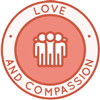
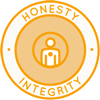
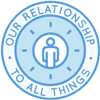
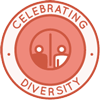
SHARE
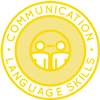
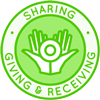
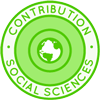
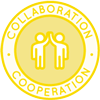
PLAY
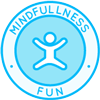
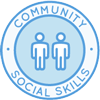
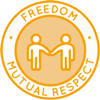
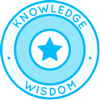
OPEN SOURCE TEACHING METHODOLOGY SUMMARIES
Montessori | Waldorf | Orff | Reggio | Multi-Intelligence | Bloom's Taxonomy | Study Tech | I-WE
INDEX OF ALL THE ONE COMMUNITY OPEN SOURCE LESSON PLANS
THE WORLD'S LARGEST ONLINE FREE EDUCATION RESOURCE ARCHIVE
RELATED CONTENT AND OTHER RELATED RESOURCES
We're building this resource section. Click here if you have a suggestion or resource for this page.
 One Community
One Community



